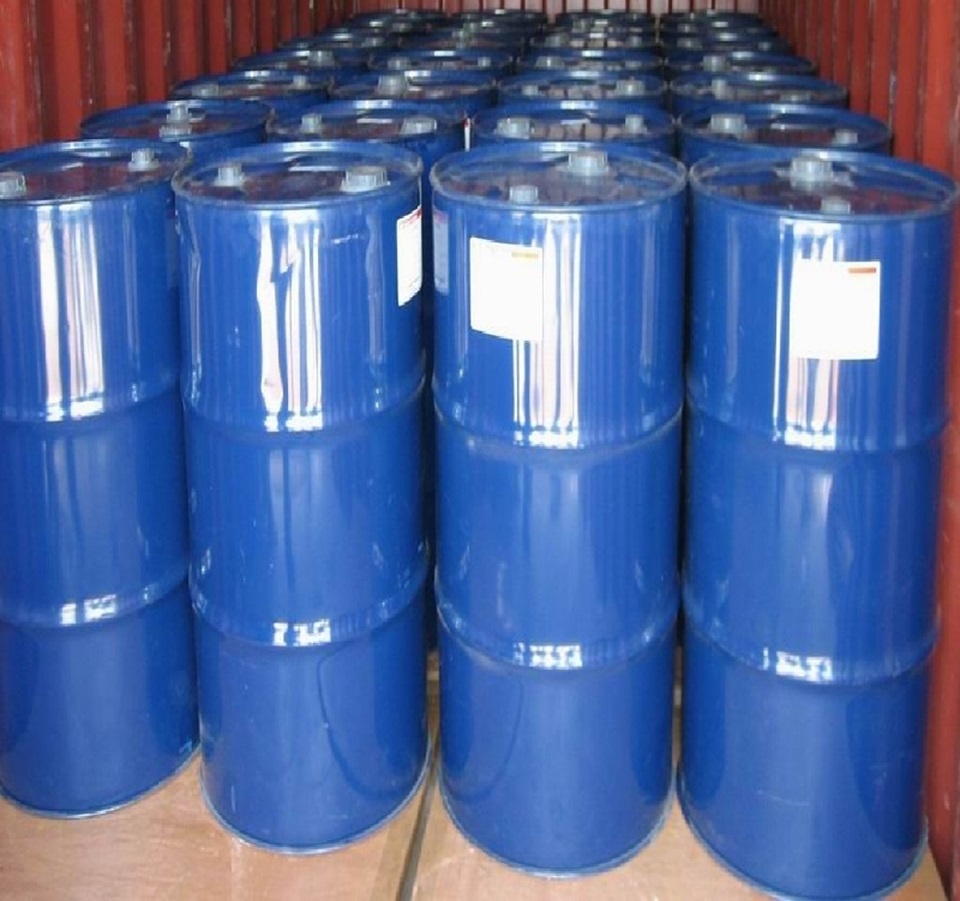İş inovasyonunu en üst düzeye çıkararak iş potansiyelinizi ortaya çıkarıyoruz.
Eposta GönderDİSİKLO HEGZİL AMİN, Disiklo Heksil Amin, Dicyclohexylamine, Dicyclo Hexyl Amine, Dicyclo Hexyl Amine, Dodecahydro Diphenyl Amine, DCHA, 101-83-7
🌟 Dicyclohexylamine (DCHA)
A) Fiziksel ve Kimyasal Özellikleri
-
Kimyasal Formül: (C₆H₁₁)₂NH
-
Molar Kütle: 181.32 g/mol
-
Görünüm: Soluk sarı sıvı
-
Koku: Tipik amin kokusu
-
Erime Noktası: −0.1 °C
-
Kaynama Noktası: ~256 °C
-
Yoğunluk: ~0.912 g/cm³
-
Çözünürlük: Suda az çözünür (~0.8 g/L), organik çözücülerle karışabilir
-
CAS No: 101-83-7
B) Kullanım Yerleri
-
Kauçuk ve plastik endüstrisi: Antioksidan ve vulkanizasyon hızlandırıcı üretiminde
-
Korozyon önleyici: Buhar kazanlarında ve boru sistemlerinde
-
Agrokimyasallar: Pestisit ve herbisit ara maddesi
-
Tekstil kimyasalları: Yumuşatıcı ve işlem yardımcıları
-
Poliüretan üretimi: Esnek köpükler için katalizör
-
Tatlandırıcı üretimi: Siklamat sentezinde ara madde
C) Üretim Şekli
-
Anilin’in katalitik hidrojenasyonu: $$ \text{C}_6\text{H}_5\text{NH}_2 + H_2 → \text{C}6\text{H}{11}\text{NH}_2 $$ Ardından ikinci alkilasyonla DCHA elde edilir.
-
Sikloheksanon + Sikloheksilamin + H₂ → DCHA (Pd/C katalizör ile)
-
Diphenylamine’in hidrojenasyonu: Ruthenyum katalizör ile alternatif üretim yöntemi
D) Reaksiyonları
-
Asitlerle: Tuz oluşturur (örneğin DCHA hidroklorür)
-
Alkilasyon: N-alkil türevleri üretilebilir
-
Amidleşme: Asit klorürlerle reaksiyona girerek amid oluşturur
E) Alternatifleri
-
Cyclohexylamine – daha düşük molekül ağırlıklı analog
-
Morpholine – korozyon önleyici olarak
-
Diethylamine, Isopropylamine – benzer baz gücüne sahip
F) Diğer İsimleri
-
Disikloheksilamin, DCHA, N,N-Dicyclohexylamine
-
Dodecahydrodiphenylamine, Bis(cyclohexyl)amine
G) Halk Dilindeki İsmi
-
“Kazan koruyucu amin”
-
“Kauçuk hızlandırıcı baz”
-
“Siklamat hammaddesi”
H) Kullanım Oranları
-
Kauçukta: %0.5–2 arası hızlandırıcı sistemlerde
-
Korozyon önleyici: ppm seviyelerinde
-
Tatlandırıcı üretimi: Sulfamik asitle stekiyometrik oranlarda
Dicyclohexylamine
CAS: 101-83-7
Molecular Formula: C12H23N
Names and Identifiers
| Name | Dicyclohexylamine |
| Synonyms | DCHA AURORA KA-7610 Dicyclohexylamin DICYCLOHEXYLAMINE Dicyclohexylamine DODECAHYDRODIPHENYLAMINE Dicyclohexylamine nitrite N-cyclohexylcyclohexanamine CYCLOHEXANAMINE,N-CYCLOHEXY DICYCLOHEXYLAMINE (SEE 2560) N-cyclohexylcyclohexanaminium N-cyclohexylcyclohexanaminium nitrite |
| CAS | 101-83-7 |
| EINECS | 202-980-7 |
| InChI | InChI=1/C12H23N/c1-3-7-11(8-4-1)13-12-9-5-2-6-10-12/h11-13H,1-10H2/p+1 |
| InChIKey | XBPCUCUWBYBCDP-UHFFFAOYSA-N |
Physico-chemical Properties
| Molecular Formula | C12H23N |
| Molar Mass | 181.32 |
| Density | 0.912g/mLat 20°C(lit.) |
| Melting Point | -2 °C |
| Boling Point | 256 °C |
| Flash Point | 205°F |
| Water Solubility | 1 g/L (20 ºC) |
| Solubility | organic solvents: soluble |
| Vapor Presure | 12 mm Hg ( 37.7 °C) |
| Vapor Density | 6 (vs air) |
| Appearance | Crystalline Powder |
| Color | White to off-white |
| Merck | 14,3095 |
| BRN | 605923 |
| pKa | 10.4(at 25℃) |
| PH | 11 (1g/l, H2O, 20℃) |
| Storage Condition | Store below +30°C. |
| Stability | Stable. Incompatible with strong acids, strong oxidizing agents. |
| Sensitive | Air Sensitive |
| Explosive Limit | 0.8-4.6%(V) |
| Refractive Index | n20/D 1.4842(lit.) |
| Physical and Chemical Properties | Nature of colorless transparent oily liquid, strong alkaline, irritating ammonia flavor, flammable, highly toxic. Slightly soluble in water, miscible with organic solvents. Relative density 0.9103(20/4 C). Boiling point 255.8 degrees C (decomposition). Freezing point -2 °c. Refractive index nD(25 °c) 1.4823. nD(20 degrees C) 1.4842. Flash point 96. application of organic synthetic intermediates, can be used for the preparation of intermediates for dyes, rubber accelerators, nitrocellulose paint, pesticides, catalysts, preservatives, vapor phase corrosion inhibitors and fuel antioxidant additives. toxicity this product is highly toxic. It has a strong osmotic odor and, therefore, is easier to detect. Mouse LD50 is 2g/kg, rat LD50 is 3.49g/kg. Dicyclohexylamine can be absorbed through the skin, causing skin allergy and gangrene, steam can cause Nausea and anesthesia, but will not cause blood poisoning. Dicyclohexylamine has been reported to cause cancer. The maximum allowable concentration in workplace air is 10mg/m3. Production equipment should be sealed to prevent run, run, drop, leakage. The operation site is forced ventilation, and the operator is wearing protective equipment. packaging, storage and transportation shall be sealed in iron drum with a net weight of 150kg. Storage in a cool, ventilated, dry place, isolated from fire, handling and transportation should be in accordance with the provisions of flammable and toxic chemicals. |
| Use | Used in organic synthesis, also used as insecticide, acid gas absorbent and steel rust inhibitor |
Risk and Safety
| Risk Codes | R22 - Harmful if swallowed R34 - Causes burns R50/53 - Very toxic to aquatic organisms, may cause long-term adverse effects in the aquatic environment. R24/25 - |
| Safety Description | S26 - In case of contact with eyes, rinse immediately with plenty of water and seek medical advice. S36/37/39 - Wear suitable protective clothing, gloves and eye/face protection. S45 - In case of accident or if you feel unwell, seek medical advice immediately (show the label whenever possible.) S60 - This material and its container must be disposed of as hazardous waste. S61 - Avoid release to the environment. Refer to special instructions / safety data sheets. |
| UN IDs | UN 2565 8/PG 3 |
| WGK Germany | 2 |
| RTECS | HY4025000 |
| FLUKA BRAND F CODES | 8-9-23 |
| TSCA | Yes |
| HS Code | 29213000 |
| Hazard Class | 8 |
| Packing Group | III |
Preparation Method
with aniline as raw material, in the presence of catalyst, high temperature and high pressure hydrogenation, to obtain dicyclohexylamine.
Use
organic synthesis intermediates, can be used for the preparation of dye intermediates, rubber accelerators, nitrocellulose paint, pesticides, catalysts, preservatives, vapor phase corrosion inhibitors and fuel antioxidant additives.
